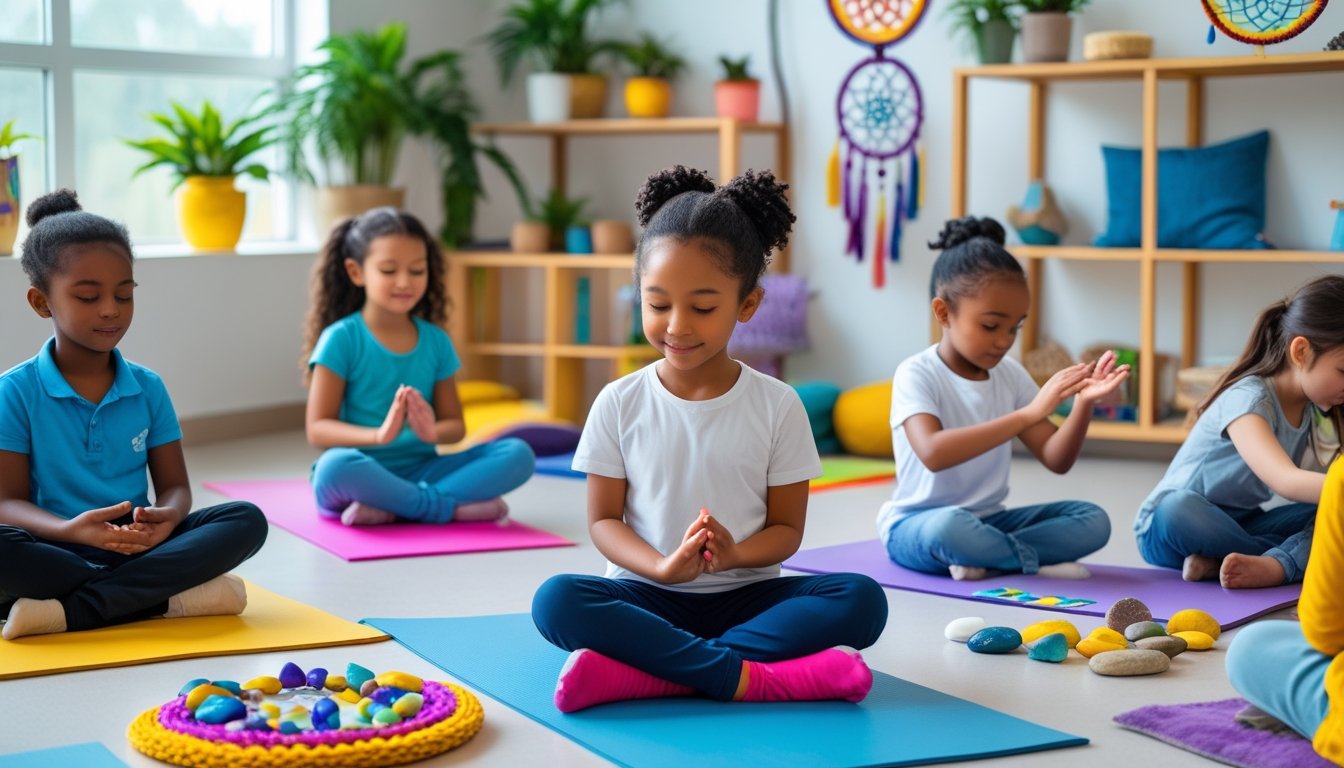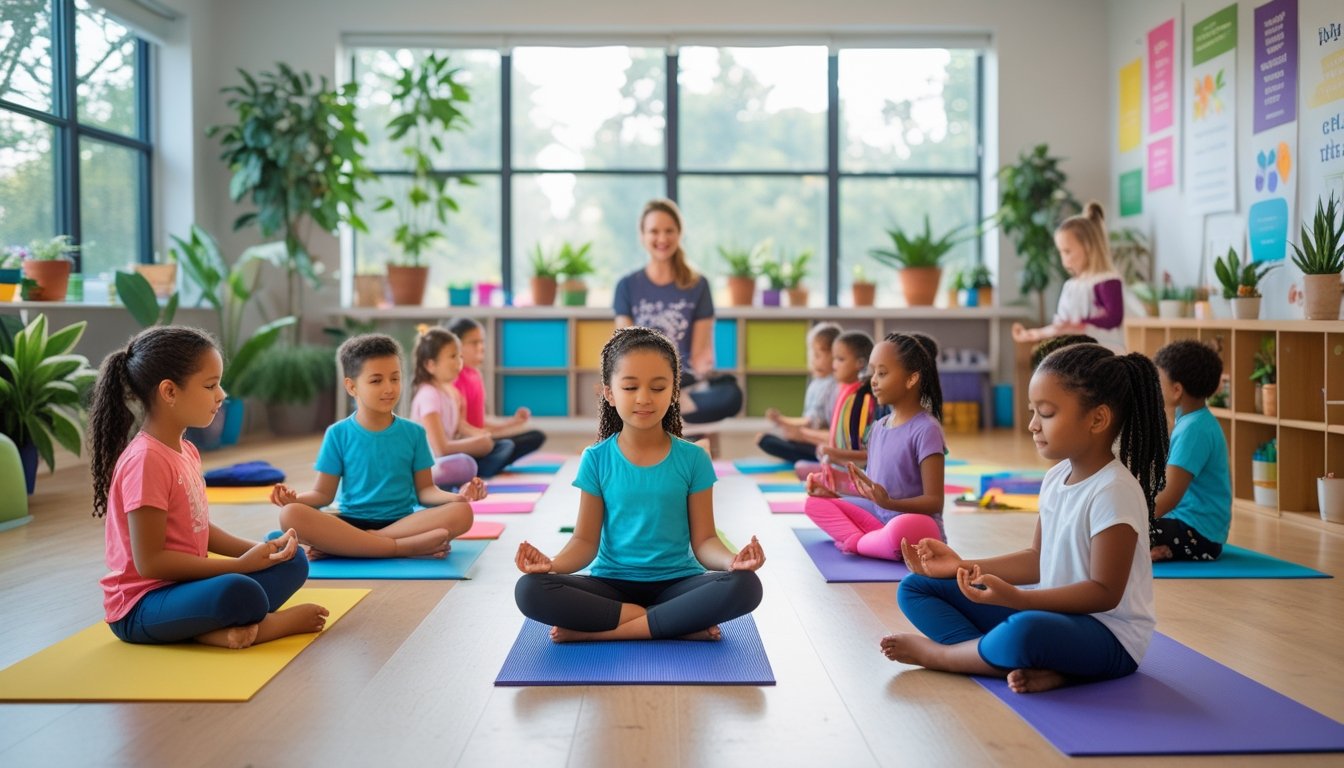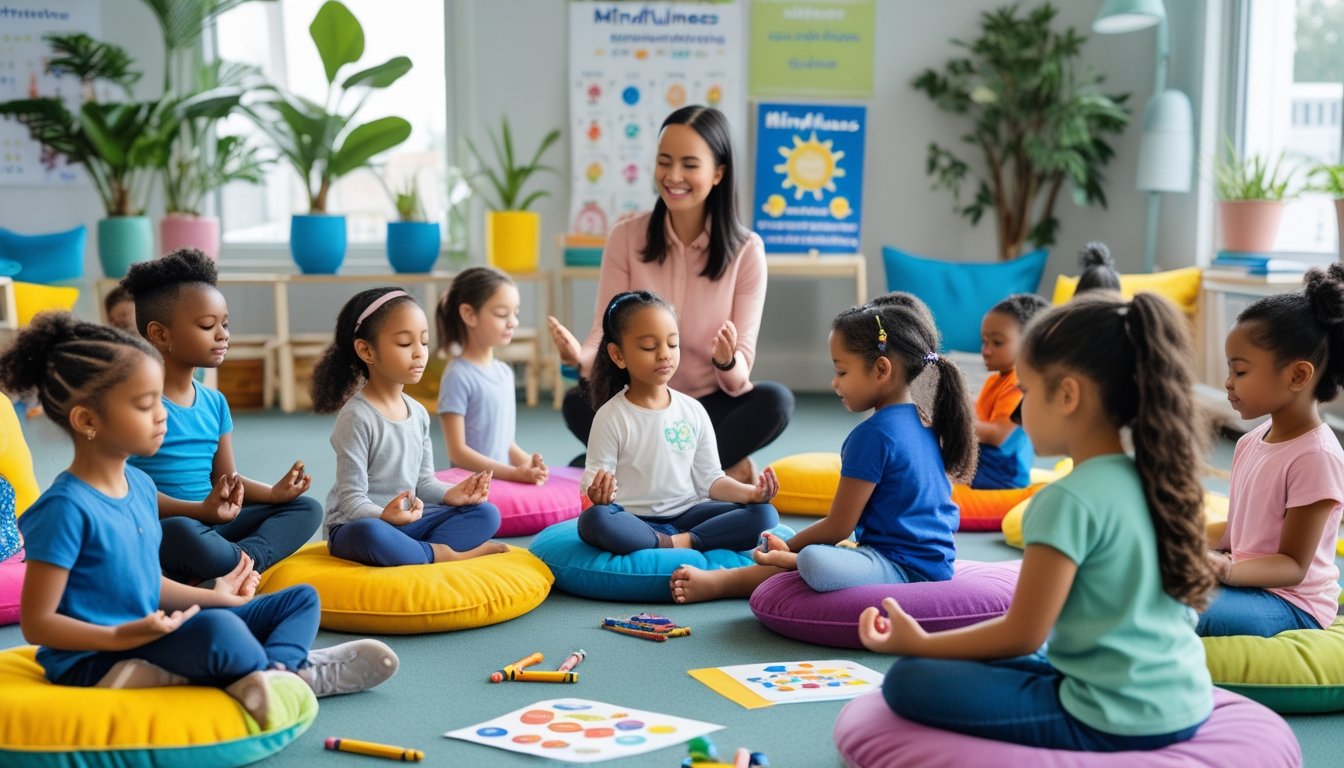Late updated: 08 Oct 2025 08:10
Written by:
Exploring Creative Mindfulness Practices for Children: Enhancing Focus and Imagination
Exploring creative mindfulness practices for children opens a world where imagination meets relaxation. In today's fast-paced environment, it's important for our young ones to find moments of calm and focus. Engaging children in playful, creative mindfulness activities fosters essential life skills such as emotional regulation and self-awareness. This not only aids their cognitive development but also enhances their emotional well-being.

By integrating mindfulness into daily activities, we provide children with the tools to navigate their emotions and thoughts more effectively. Activities such as mindful breathing, art projects, and nature exploration can be both enjoyable and educational. These practices help them build resilience, reduce stress, and connect with their inner world, nurturing a balanced and thoughtful approach to various challenges.
Through these creative approaches, we're engaging children in a meaningful way that aligns with their interests and natural curiosity. As we embark on this journey, we must remember that the key is to make mindfulness accessible and appealing, ensuring that it becomes a cherished part of their routine.
Key Takeaways
- Creative mindfulness practices aid children's emotional development.
- Mindfulness can be integrated into everyday activities.
- Engaging, fun activities foster a lifelong interest in mindfulness.
The Foundations And Benefits Of Mindfulness For Children
Mindfulness, integrated thoughtfully into the lives of children, holds substantial benefits. It not only supports emotional regulation and mental health but also enhances children's social interactions. Approaching mindfulness from both home and school environments ensures consistency and effectiveness.
Understanding Mindfulness And Its Importance
Mindfulness involves being fully present and engaged in the moment, aware of our thoughts and feelings without judgment. For children, this translates into practices like mindful breathing and guided imagery. These activities help youngsters understand their emotions better and promote emotional well-being. As children often face challenges with focus and emotional balance, introducing them to mindfulness can greatly assist in building resilience and fostering a calm mind. Teaching mindfulness early can lay a foundation for lifelong mental and emotional health.
Core Benefits For Children's Well-Being
Practising mindfulness offers numerous benefits for children. It enhances emotional regulation, allowing children to manage stress and anxiety more effectively. This results in better focus and greater academic success. Mindfulness encourages pro-social behaviours, improving relationships with peers. Children's self-awareness and empathy grow, making them more understanding and considerate. Over time, the practice aids in boosting self-esteem and confidence. By regularly engaging in mindfulness, children can learn to navigate life’s challenges with greater ease and adaptability, contributing to their overall happiness and well-being.
Creating A Mindful Environment At Home And School
Creating supportive environments at home and school is crucial for effective mindfulness practice. Parents and educators can incorporate mindfulness activities into daily routines, using resources like audio-guided sessions or simple breathing exercises. At home, families can dedicate a peaceful corner for mindfulness practices. In schools, teachers can integrate short, mindful moments throughout the day. Consistency is key; regular practice fosters a norm of mindfulness, leading to better emotional management across various settings. Encouraging open communication about emotions and practising mindfulness together strengthens these skills, making mindfulness a shared and valued experience for everyone involved.
Creative Mindfulness Practices For Children

Exploring creative mindfulness practices offers children unique ways to engage their senses, enhance their emotional awareness, and promote relaxation. From breathing exercises and sensory check-ins to artistic pursuits, these activities provide varied methods for children to connect with the present moment effectively.
Mindful Breathing And Breathing Buddies
Mindful breathing forms the core of many mindfulness practices. We can introduce this to children by having them use "breathing buddies." These are simple objects like a soft toy that they can place on their tummy. As they breathe in and out, they watch the buddy rise and fall. This visual and tactile feedback makes the practice more engaging and helps them focus on their breath.
By turning mindful breathing into a playful activity, we can help children manage stress and develop concentration. Breathing buddies are particularly effective for younger children, offering a tangible way to relate to the abstract concept of mindfulness. This encourages them to participate willingly, making it a fun and calming part of their routine.
Sensory Awareness: Five Senses Check-In And Texture Exploration
Engaging the five senses can ground children in the present and enhance their sensory awareness. We can lead a "five senses check-in" by asking them to notice what they see, hear, smell, taste, and feel at a particular moment. This encourages mindfulness of their surroundings and can reduce anxiety.
Texture exploration adds another dimension. Providing children with different textures to touch, such as smooth stones or soft fabrics, allows them to focus on the sensory experience. By feeling and describing these textures, children develop a mindful awareness of their environment and a richer understanding of sensory stimuli.
Engaging Activities: Scavenger Hunts, Mindful Walking, And Yoga For Kids
Scavenger hunts designed with mindfulness in mind can transform ordinary walks into an exciting activity. We can create lists of items for children to find, encouraging them to interact closely with their environment while practising focus and observation.
Mindful walking, on the other hand, turns attention to each step and breath. It is a simple practice but a profound way to maintain presence. Yoga for kids integrates movement with mindfulness, enhancing physical awareness and self-regulation. Through poses and guided breaths, children learn to connect to their bodies and find calm in motion.
Artistic Mindfulness: Mindful Drawing, Calm Jars, And Gratitude Exercises
Artistic activities, like mindful drawing, use creativity as a form of meditation. We can provide colouring sheets or blank paper for children to express their emotions and focus their minds. This artistic outlet aids in processing feelings and building concentration.
Creating a calm jar filled with glitter and water is another visual tool. Children can shake it and watch the glitter settle, symbolising a calming of the mind. Gratitude exercises, such as drawing or writing about things they're grateful for, encourage positive thinking and emotional balance.
Playful Eating: Mindful Eating And Taste Awareness
Mindful eating introduces children to the art of truly tasting and appreciating food. We can guide them to eat slowly, savour each bite, and note the texture, flavour, and aroma. This practice can transform mealtimes into a moment of sensory exploration and awareness.
Focusing on taste awareness fosters a deeper connection to the act of eating, making it more enjoyable and educational. By encouraging children to think about where food comes from and how it nourishes their bodies, we instil a sense of gratitude and mindfulness in everyday actions.
Practical Tools: Worksheets And Daily Mindfulness Exercises
Worksheets designed for mindfulness activities provide structured guidance. We can use these tools to teach concepts like emotional recognition, gratitude, and self-awareness. They often include activities to prompt reflection and expression through drawing or writing.
Daily mindfulness exercises, incorporated into routine, help reinforce these concepts. Whether it’s a moment of mindful breathing before starting the day or a gratitude list before bedtime, regular practice nurtures mindfulness as a habit. These tools offer children varied paths to explore self-awareness and emotional well-being, supporting long-term development.
Frequently Asked Questions

In exploring mindfulness for children, a variety of activities and approaches can effectively support emotional and mental growth. Creative arts, storytelling, and play serve as powerful tools for imparting mindfulness concepts.
What are the top activities to foster mindfulness in young children?
Engaging young children in mindfulness can be achieved through interactive activities. Exercises like deep breathing, sensory walks, and simple yoga poses help focus their attention and calm their minds. Creating calming jars or listening to soothing sounds can also enhance their mindfulness experience.
How can creative arts be utilised to teach mindfulness to children?
Art, music, and drama offer unique avenues for teaching mindfulness. Encouraging kids to draw or paint their emotions allows them to explore their feelings creatively. Music activities, like listening attentively to different tunes or creating rhythms, can also help children stay present and mindful.
In what ways does practicing mindfulness benefit a child's development?
Practicing mindfulness contributes to various aspects of a child's development. It enhances focus, helps regulate emotions, and reduces anxiety. These skills are crucial for social interactions and academic performance. Children practising mindfulness often show increased resilience and self-awareness.
Are there any age-specific mindfulness exercises for primary school children?
Yes, primary school children can benefit from age-appropriate mindfulness exercises. Activities like guided imagery, where they imagine peaceful scenes, or mindful storytelling can hold their attention. Simple body scans or practising gratitude can also be included in their routine to build mindfulness skills.
How can parents and educators incorporate mindfulness into children's daily routine?
Incorporating mindfulness into daily life requires consistency. Parents can model mindfulness by practising alongside their children. Simple practices like mindful eating, bedtime relaxation, or short meditation sessions can be seamlessly integrated into everyday routines. Educators can include mindfulness breaks during school hours.
What role do storytelling and play have in introducing mindfulness concepts to children?
Storytelling and play are effective in introducing mindful concepts as they capture children's attention. Mindful stories can teach them empathy and kindness, while mindful play, like role-playing or constructing, encourages them to be present and engaged. These methods make mindfulness relatable and enjoyable for children.
